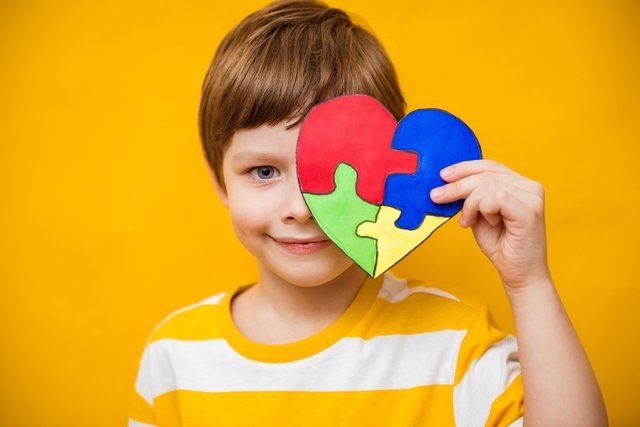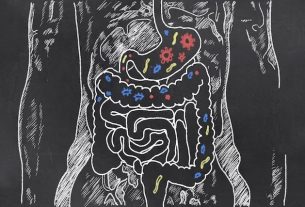Autism, scientifically known as Autism Spectrum Disorder (ASD), is an alteration in neurological development that begins in childhood and is characterized by communication difficulties and patterns of behavior, interests and activities that tend to be restricted and repetitive.
People with autism tend to maintain little eye contact when talking and have difficulty interacting or understanding gestures., for example. Furthermore, they may also be excessively interested in specific topics or have difficulty adapting to changes in their routine.
If autism is suspected, it is important to consult a pediatrician or neuropediatrician to confirm the diagnosis and initiate appropriate treatment, which can improve the person’s quality of life and help develop autonomy.

Main signs and symptoms
The main signs and symptoms of autism are:
- Difficulty in social interactionmaintaining little eye contact, facial expression or gestures, having difficulty making friends, and expressing ideas and emotions;
- Impairment in communicationsuch as having difficulty starting or maintaining a conversation, understanding other people’s point of view, understanding figures of speech, humor or sarcasm, maintaining a monotone tone of voice (sounding like a robot), or failing to respond or delay responding when called;
- Behavioral changessuch as not playing pretend, getting bored with small changes in routines or being very interested in specific themes and objects, such as an airplane wing or numbers;
- Repetitive behaviorssuch as sitting and rocking your body back and forth frequently and repeating some words or phrases several times.
Generally, the symptoms harm the person in their relationships with others and can affect the development of their autonomy. However, sometimes the signs can also be so mild that they end up going unnoticed.
In some cases, a person with autism may also present unusual qualities, such as being able to remember many details or having good skills in music, numbers or art, for example. Check out more symptoms of autism according to age.
Online Autism Test
To find out how likely a child is to have autism, Answer the following test, taking into account the child’s behavior from 2 years of age onwards. If the child only displayed a certain behavior 1 or 2 times, please answer no to the question.
This test should not be used as a diagnosis, therefore, it is recommended that in any case of suspicion, you consult a pediatrician or a neuropediatrician, in order to be correctly evaluated.
Degrees of autism
The severity of autism can be classified into:
1. Mild autism
When autism is mild, the symptoms are little noticed and the person can be practically independent. However, even mild autism requires some support so that the person can relate well and develop their skills. Understand better what mild autism is and take the online test.
2. Moderate autism
In moderate autism, symptoms tend to be more easily perceived. The ability to carry out daily tasks and relate to other people is generally impaired, requiring support to deal with difficulties. The person may only be able to speak in simple sentences and on topics of personal interest, for example.
3. Severe autism
When autism is severe, the person has great difficulty interacting with others, and may not be able to speak sentences or even words in an understandable way, for example. In this case, the person generally needs constant support from family members and professionals in their care.
Types of autism
Autism has already been divided into types:
However, This division is no longer used, and currently there is only autism spectrum disorder.
How to confirm the diagnosis
The diagnosis of autism is usually confirmed by a pediatrician or neuropediatrician, taking into account the child’s behavior and reports from parents and other professionals, such as teachers and psychologists, for example.
Taking care of your health has never been easier!
In addition, sometimes, exams such as neuropsychological evaluation and hearing tests may also be indicated to confirm autism.
In adults, the diagnosis can be a little more difficult, because autism can be confused with other disorders, such as anxiety or attention deficit, shyness or even a “weirdness” of the person. In this case, it is important to consult a neurologist or psychiatrist.
Read too: Autism in adults: what it is, symptoms, diagnosis and treatment
Causes of autism
The causes of autism are not yet fully known, however some studies suggest that genetic, hereditary and environmental factors are the main factors related to the development of the disorder.
Some of the possible causes of autism include:
- Hereditary cause: people with siblings with the syndrome have a greater risk of developing autism;
- Genetic diseases: having some genetic diseases, such as Down syndrome, fragile X syndrome, Rett syndrome and tuberous sclerosis, can increase the chances of developing autism;
- Environmental factors: such as consumption of alcoholic beverages, tobacco, medication or other drugs during pregnancy, can increase the risk of developing autism.
In addition, high-risk pregnancy, elderly parents, induced labor or low birth weight can also increase the risk of developing autism.
How the treatment is carried out
Autism treatment must be carried out under the supervision of a doctor and varies according to individual needs, and may include:
- Use of medications and supplementssuch as risperidone, aripiprazole, melatonin, probiotics and omega 3;
- Speech therapy sessionsto improve speech and communication;
- behavioral therapyto facilitate daily activities;
- occupational therapyto improve socialization.
It is also advised to maintain a balanced diet, which can help improve sleep, reduce irritability and improve appetite. See an example of a diet for autism.
Is autism curable?
Autism has no cure, however, when treatment is carried out correctly, it can help improve the person’s quality of life, communication capacity and autonomy.
Bibliography
- MOON, Sun J. et al. Accuracy of the Childhood Autism Rating Scale: a systematic review and meta-analysis. DMCN. Vol.61, n.9. 1030-1038, 2019
- STATPEARLS. Autism Spectrum Disorder. 2022. Available at: <https://www.ncbi.nlm.nih.gov/books/NBK525976/>. Accessed on Nov 7, 2022
- American Psychiatric Association. Diagnostic and statistical manual of mental disorders: DSM-5. 5ed. Porto Alegre: Artmed, 2014.
- MEHLING, Margaret; TASSÉ, Marc J. Severity of Autism Spectrum Disorders: Current Conceptualization, and Transition to DSM-5. Journal of Autism and Developmental Disorders. Vol.46, n.6. 2000–2016, 2016
- CENTER FOR DISEASE CONTROL AND PREVENTION. Autism Spectrum Disorder, Family Health History, and Genetics. Available at: <https://www.cdc.gov/genomics/disease/autism.htm>. Accessed on November 18, 2021
- THE NATIONAL INSTITUTE OF MENTAL HEALTH. Autism Spectrum Disorder. Disponível em: <https://www.nimh.nih.gov/health/topics/autism-spectrum-disorders-asd/index.shtml#part_145441>. Acesso em 18 nov 2021
- BRAZILIAN SOCIETY OF PEDIATRICS. Autism Spectrum Disorder. 2019. Available at: <https://www.sbp.com.br/fileadmin/user_upload/21775c-MO_-_Transtorno_do_Espectro_do_Autismo.pdf>. Accessed on November 18, 2021

Sign up for our newsletter and stay up to date with exclusive news
that can transform your routine!
Warning: Undefined array key "title" in /home/storelat/public_html/wp-content/plugins/link-whisper-premium/templates/frontend/related-posts.php on line 12
Warning: Undefined array key "title_tag" in /home/storelat/public_html/wp-content/plugins/link-whisper-premium/templates/frontend/related-posts.php on line 13



